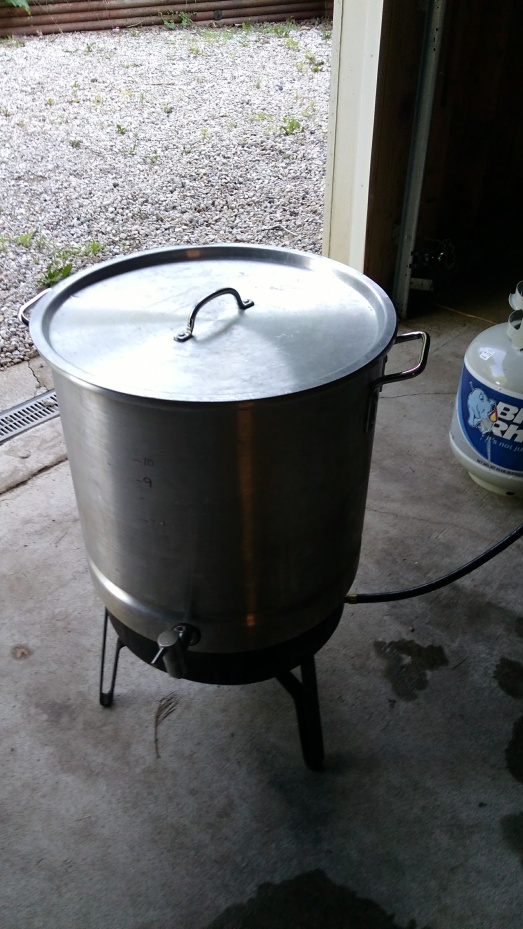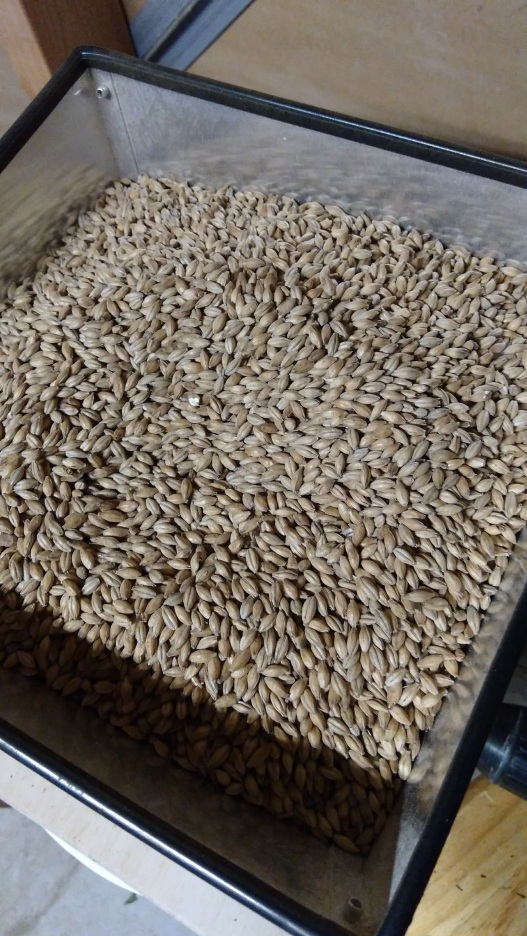This was a clone recipe from Avery Brewing’s “Salvation”, a Golden Strong Ale. My first attempt at the style, and my first attempt at a new technique (more on that later) – and this beer appears to be really good. At least, that’s what several of my homebrewing friends have told me, and I trust their palates much more than mine. I should note that I’m still very knew at brewing and at tasting different styles, so I refer to my local homebrew club for advice. So, not knowing what a Golden Strong is supposed to taste like, I thought I had detected a little corn, which is considered an off-flavor. However, all my homebrew friends said it was on point, on style, and tasted good, which made me happy. I also tried a a commercial example, and it tasted exactly like mine. This is a simple, highly drinkable, high alcohol beer. You get a little banana and clove from the yeast, but not much; you get the ‘graininess’ from the malt, and it’s shockingly smooth going down. This is a dangerous beer to drink, my friends. I’m not sure what the crystal malts actually did to the beer; it’s certainly not sweet.

Belgian Golden Strong Ale (5 gal.)
12.6 lb. 2-Row
3 lb. Pilsen (BE)
.6 lb. Caramel/Crystal 20L
.6 lb. Caramel/Crystal 10L
1.2 lb. Corn Sugar (@ flame out)
——————-
2 oz. Sterling (@ flame out)
2 oz. Fuggle (@ flame out)
——————-
Abbey Ale Yeast (liquid, with vitality starter)
So the process with this beer was pretty standard. I started with 8 gallons of water, heated the water quickly to 149.5F mash temperature. I soaked the barley for 30 minutes, stirring several times during the mash. I crushed the barley fine for greater efficiency. After 30 minutes of soaking, I went ahead and squeezed the bag of barley, discarded it, and quickly got to a boil. Because of the low bitterness, I only boiled for 25 minutes. I also decided to only add hops at flame out, which gave me a pleasantly low amount of bitterness. I used a wort chiller for about 7-8 minutes, which lowered the temperature to about 120 degrees, and then put the hot, unfermented beer in a freezing cold upright freezer to finish off. One hour, 30 minutes exactly. After about 4 hours of passively chilling, the beer was at 73F – close enough for me to pitch the yeast and let the temperature ride to my desired fermentation temp of 70F. With Belgian beers, I like to ramp the temperature up during fermentation, so two days after brewing I ramped up to 75F, and two days after that, 80F. As usual, when fermentation was complete, I cold crashed, added gelatin, and bottled. As usual, I never had to move the pot of beer throughout the entire process.
Oh wait. I forgot to talk about the yeast.
‘Vitality’ starter is a concept I got from brulosophy.com, where admittedly all my ideas come from (except for One Pot Brewing, that’s mine). Instead of making a traditional starter two or three days in advance, which involves planning, equipment, and time; with a vitality starter, the goal is to wake up the yeast up on the same day you are brewing. It gets the yeast horny and ready to go. Right up my alley. Here’s my interpretation. After mashing, I filled up a few sanitized glass jars with hot wort. Then, after cooling to around 70F, I put the yeast (in this case, Abbey liquid) into one of those jars, saving the others for future batches. I simply let the yeast sit in the jar full of wort until it was time to pitch, about 5 hours later. Did it work? I think so. The next morning I noticed a nice foamy krusen starting, something I am not used to with liquid yeast. Liquid yeast, having far fewer cells than dry yeast, is the only reason I would use this method, especially using liquid yeast with high alcohol beers.




